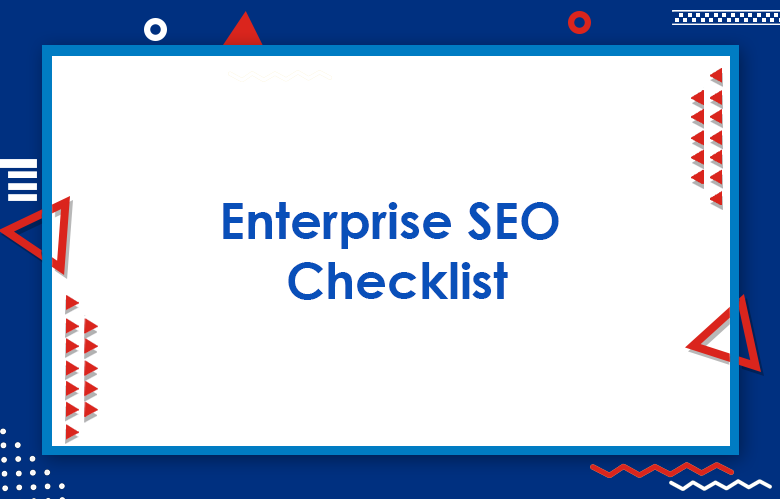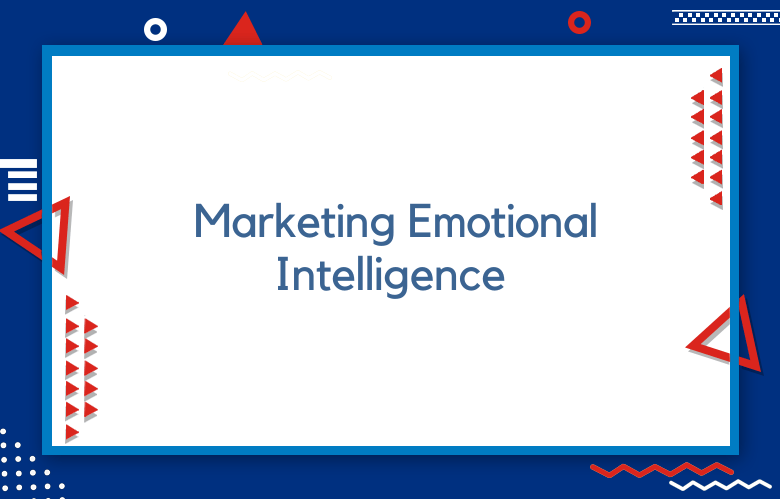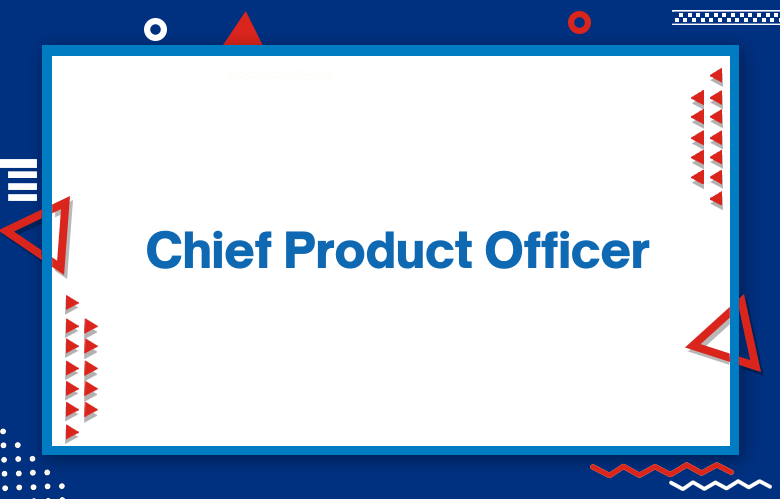Enterprise SEO Checklist: How to Optimize Your Enterprise-Level Site

Enterprise SEO Checklist: SEO is the most significant marketing source that can be hyped with emerging promotional strategies and tactics. Enterprise SEO is the only marketing type that requires businesses to roll out unique marketing methods. Moreover, planning the SEO strategy for the enterprise company makes it more challenging to reach the expected customers.
Giant search engines like Google, Yahoo, and Bing are the only sources to find customer engagement by launching massive website traffic.
Enterprise SEO Checklist you need to know:
Secure your online brand and online reputation
Correct unwanted product reviews
Produce a high-quality content marketing strategy
Build links through guest blogging/influencer marketing outreach, etc.
Keyword Analysis
Onsite Optimization
Take webmaster training courses
Map your existing keywords
Create a keyword inventory
Define your marketing objectives
Research competitors on backlinks
Make sure your site is mobile-friendly
Use analytics to track visitors
Update the website’s internal structure
Get external links for the site
Research your competitors
Crawlers, spiders, and bots
Stay relevant
Make use of content marketing
Keyword research tools
Build a practical site map
Create a web copy style guide
Conduct a keyword research
Analyze competitor websites
Information architecture – URL structure and tags
Assess technical optimization areas of SEO
Content Creation Activities (product pages, blog posts, social media, etc.)
Define business goals
Find out the keywords you want to rank for
Do competitor analysis
Make sure your website is mobile-friendly, secure, fast-loading, and crawlable
Evaluate current site ranking positions
Strategies for ContenContentocial media sharing
List out keywords to target
Introduce/remove complex factors
Monitor backlinks and continuously refine
Localization, translation, and multilingual support
E-commerce website with great UX (user experience)
Site performance and user experience
Geo-targeting – location-based searches and access to special offers
Content Marketing
Multimedia Marketing
Brand Promotion
Link Building Campaigns
Webmaster Tools
Mobile Website Implementation
Keyword Ranking Strategy
Content Development Strategy
Onsite Analysis
Link Building Strategy
Verify site architecture
Remove duplicate ContenContent rankings and traffic
Create brand messaging
Work on backlinks
Increase on-page elements
Think about your top keywords
Reach out to relevant influencers
Track your progress by using our SEO tracker
Develop a content marketing plan
Improving user experience with blog articles and FAQs
Define Your Audience
Optimize Your Site Structure
Start Local
Use the Right Keywords
Define the goals of the project and tasks
Make a plan to develop a content marketing strategy – short and long-term
Define the types of things you will publish
Decide what channels you will focus on
Think about when you will publish items
Create your Social Media Strategy for Enterprise SEO / SMM
Create Keyword Strategy (On-Page + Off-Page)
Update your site structure and navigation
Audit your current SEO structure
Evaluate and improve customer experience
Auditing your marketing funnels and landing pages
Setup social strategies
Compile and build a keyword list
Audit your site structure
Make some sitemaps and submit them to search engines
Setup Google Analytics and Google Search Console Tools
Set up Social media monitoring
Assess your current situation
SEO Audit
On-Page Optimization
Off-Page Optimization
Build On-Page Search Features
Monitor and Improve Results over Time
How to set up an SEO checklist for enterprise clients
1: Make your processes FAST
2: Identify your goals and roadblocks
3: What is their budget as well as expectations
4: Create a new blueprint for future clients
5: Start with SEO strategies on low-cost projects
Enterprise SEO Checklist
Keyword Research:
Researching the trending and most searched keywords can let your business website reach a wider audience.
Google Analytics:
Google Analytics is the only platform that offers the pin-to-pin business insights that all brands need.
Analyzing and auditing the issues of technical SEO:
Always be focused on auditing, exploring the technical SEO issues, and fixing them to reach the business goals.
Fix broken links:
Please focus on the broken website links and fix them on the spot to gain engagement.
Google Search Console:
With this, the business brand can optimize and monitor any website’s search performance:
It is the process of tag management that enables you to update the codes easily and quickly.
SEO tools:
Advanced SEO tools can enhance the business website’s performance by loading quickly.
Build the website to load fast:
Build a website that loads fast, as visitors are looking for this type of experience.
SEO Plugins:
Installation of SEO plugins can make the most out of your SEO efforts by making your business tasks simple.
XML sitemap:
The insertion of XML sitemaps allows search engines to find practical URL lists from website domains.
Website architecture:
Build the complete website architecture that leads to generating the million-audience traffic.
Robots.txt:
This enables businesses to assign the search engine to which the website content is essential for crawling.
Site speed and page load time:
The critical aspect for any business is building a website that loads quickly without wasting visitors.
404 pages:
The customized 404 pages direct the visitors to get the information they need and encourage them to discover your website further.
Crawl errors:
When the search engine is on its way to get the page of your business website and fails, it can be a crawl error. Try to fix them.
Broken links:
Patch up the broken links of your business website that annoy the visitors.
Broken images:
Identify and fix the broken images of your website to dive your brand into performance growth.
Duplicate Content:
Don’t add the copied ContenContent to the other websites and blogs that lead to copyright infringement.
Mobile-friendliness:
Mobile usage is the primary source of business traffic for the brands that must focus more.
Topics:
Choose suitable topics to drive real-time business results with continuous audience engagement.
Primary keywords:
Use advanced tools to find the primary keywords that will roll into your business website.
Long-tail keywords:
Make sure to add the long-tail keywords that maintain the visitors’ long-time engagement and improve the ROI.
Map keywords to the buyer’s journey:
Add the keywords that are entirely relevant to the website visitors searching for.
Competitor keyword analysis:
Know how the competitors are generating website traffic engagement by delivering craving keywords.
Search trends:
Get alerts of trending topics on the social media channels that are mainly responsible for growth generation.
Meta Description:
The meta description describes your business content and drives website traffic.
Optimized ContenContentage SEO):
Add the proper tags in your contenContenthelp find your website. Your website’s search ranking internal links let visitors discover other contenContentur websites.
Image optimization:
Compressing your website’s images to use less data lets the website load faster.
Social media:
Social media engagement is the only growth booster that drives real-time results.
Influencer partnerships:
Partnering with the top influencers can help you achieve results-driven business performance by reaching massive customers.
Business partnerships:
Collaboration with the top brands in the market enables you to drive their website traffic to your business website.
Reviews:
Monitor and analyze the customer reviews of your products or services to know how you are performing.
Rank tracking:
Track your website’s search ranking and implement tactics to find the higher search ranking.
Content Marketing:
Make sure to get unique ContenContentsive from competitors in the global market.
Competitor Insights:
Understand the business insights and develop strategies to overcome your competitors.
Concentrating on topic selection:
Prior knowledge of the website topics’ selection helps maintain continuous engagement.
Optimize title tags:
The optimization of the title tags of the website is necessary to get your business on a competitive edge.
Conclusion:
To find potential customer engagement for your business sales, you should impress giant search engines like Google, which hype your brand website to the millions. To do that, you should find an SEO checklist that improves your website’s search rank.
Call: +91 9848321284
Email: [email protected]



